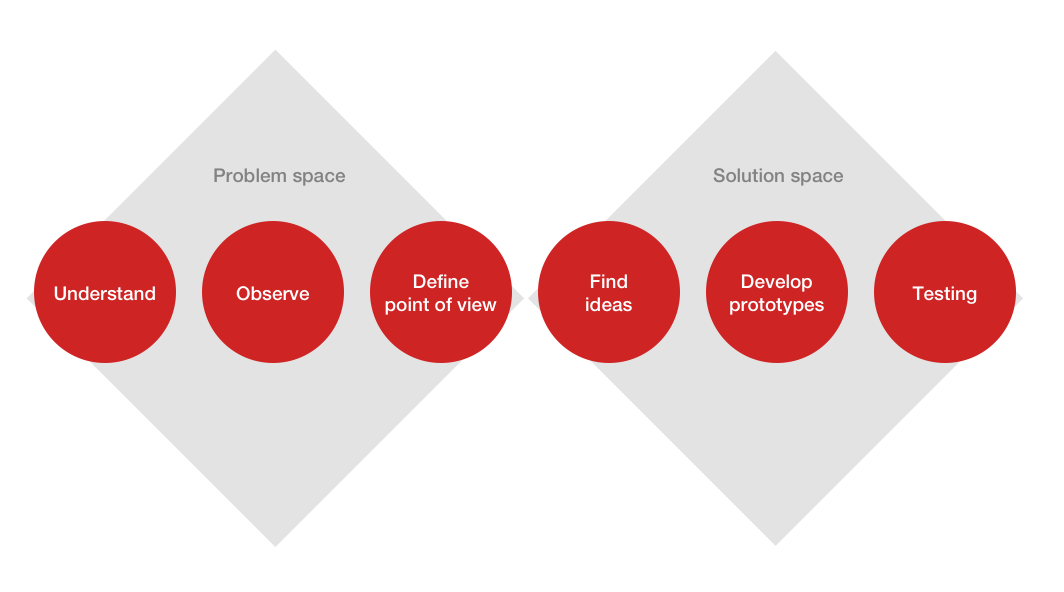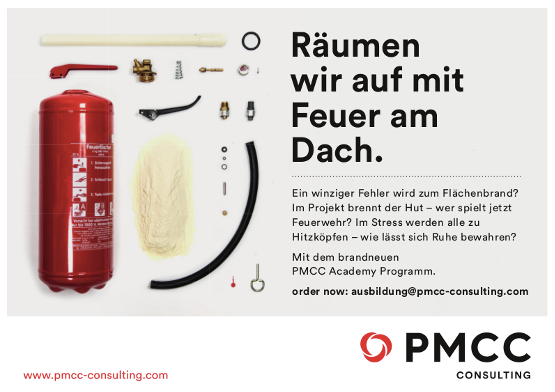Design Thinking started in the 1990s in the USA, when the innovation agency IDEO developed Design Thinking as a method for solving today's complex problems. In the meantime, the approach has also become firmly anchored in Europe - no wonder, since Design Thinking wants to enable new and surprising forms of creative collaboration. We-intelligence, collaboration and a new work awareness are the buzzwords.
Design Thinking is a management tool that combines creative and analytical methods. It aims to release maximum creative potential among all stakeholders of an innovation project in order to systematically solve complex problems or tasks in a customer- and above all user-oriented manner. This is achieved on the basis of a six-stage, iterative process, which must always be open-ended. In this way, new findings can be integrated at any time. The basic principle is that successful innovations can only emerge if the focus is on people with their specific needs – no matter whether project participants, customers or consumers.
By definition, design thinking is both a methodology and an approach and is based, among other things, on the following key principles:
- An attitude that focuses on the concerns of the user and his reality of life.
- An iterative process that deals intensively with both the problem and the solution as well as the associated methods.
- There are framework conditions that make this approach really efficient.
An Attitude
The basic attitude in Design Thinking is systemic-constructivist: contrary to the mechanistic-positivistic cause-and-effect principles, the attitude "we know the problem and have the best solution" does not apply here, but the best solution for the user is worked out, however, only after the reality of the user has been closely observed and understood. Values and thus the attitude could be simplified as follows:
- Open and willing to learn: You try to understand and learn quickly.
- Empathetic: One is interested in the reality of life of the customer/user.
- Practical and pragmatic: Come into action
- Accepting complexity
- Externalizing: visualize and show
- Iterating: “Try often and fail early to succeed sooner”
A Process
The process in Design Thinking largely reflects the attitude mentioned above in six steps. A rough distinction is made between the problem space and the solution space (see figure 1).
The problem space is about dealing intensively with the initial situation, the problem and its background, a user’s needs etc. It is necessary to develop a common understanding of the initial situation in the team (understanding), then to study the target group with different methods, e.g. interviews, observation etc. (observing) in order to pick out the most important findings from the multitude of collected information, to qualify and analyze them, i.e., to arrive at a point of view which summarizes the user’s problem or concern in one sentence (defining point of view).
This defined point of view thus forms the order for developing the solution and the basis for the step into the solution space. In a fourth step, a large number of solution approaches are developed, clustered and the result is identified as a guiding idea (finding ideas). The previously identified idea - whether a physical product, an improved process or a new app - is immediately worked out as a prototype (paper, cardboard, Lego or role-plays or videos) and thus presented in a perceptible way (prototype development). In the last and sixth step (testing), this prototype is now tested together with users for strengths and weaknesses, and feedback is collected in order to be able to use these learning effects again for idea generation and adaptation, to build and test the next simple prototype - until finally a mature product idea is created that has already been tested extensively but without effort.
Framework conditions
In order for Design Thinking's approach to be truly effective, there are a few framework conditions that need to be considered: For being able to reflect on complex topics as divergently as possible, interdisciplinary teams are necessary. In the composition of such teams, one should pay attention both to (rather deep) expert knowledge and to broad orientation knowledge. Sufficient space and adequate equipment are also needed in order to have room for creative work.
Design thinking is certainly not applicable to all aspects of a business. However, it is certainly a workable and helpful approach that makes problem-solving, improvement, development or idea-finding processes very fast and effective with the help of a structured, iterative process.1
For being able to reflect on complex topics as divergently as possible, interdisciplinary teams are necessary.
Quelle
-
Eine detaillierte Darstellung des Design-Thinking-Ansatzes finden Sie im Artikel von Stefan Plank, ↩







 Jira
Jira
 Confluence
Confluence
 SAP
SAP
 API
API





